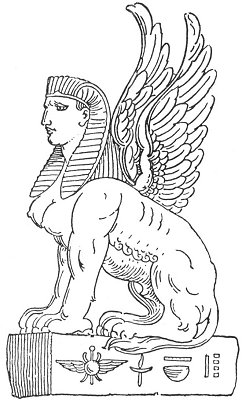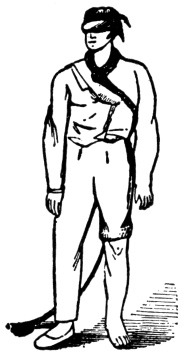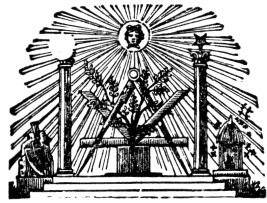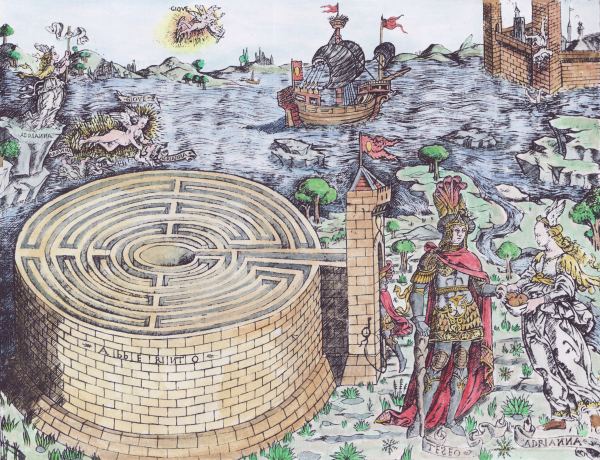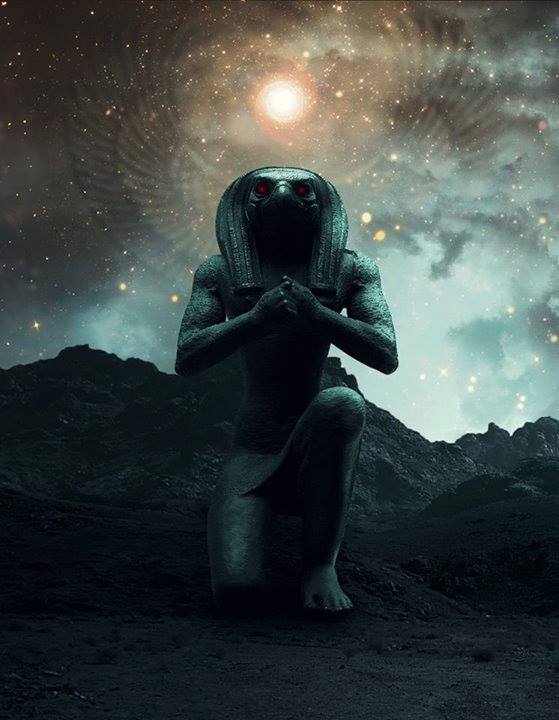Caliph al Mamoun, an illustrious descendant of the Prophet, inspired by stories of the immense treasures sealed within its depths, journeyed from Bagdad to Cairo, A.D. 820, with a great force of workmen to open the mighty Pyramid. When Caliph al Mamoun first reached the foot of the “Rock of Ages” and gazed up at its smooth glistening surface, a tumult of emotions undoubtedly racked his soul. The casing stones must have been in place at the time of his visit, for the Caliph could find no indication of an entrance–four perfectly smooth surfaces confronted him. Following vague rumors, he set his followers to work on the north side of the Pyramid, with instructions to keep on cutting and chiseling until they discovered something. To the Moslems with their crude instruments and vinegar it was a herculean effort to tunnel a full hundred feet through the limestone. Many times they were on the point of rebellion, but the word of the Caliph was law and the hope of a vast fortune buoyed them up.
At last on the eve of total discouragement fate came to their rescue. A great stone was heard to fall somewhere in the wall near the toiling and disgruntled Arabs. Pushing on toward the sound with renewed enthusiasm, they finally broke into the descending passage which leads into the subterranean chamber. They then chiseled their way around the great stone portcullis which had fallen into a position barring their progress, and attacked and removed one after another the granite plugs which for a while continued to slide down the passage leading from the Queen’s Chamber above.
Finally no more blocks descended and the way was clear for the followers of the Prophet. But where were the treasures? From room to room the frantic workmen rushed, looking in vain for loot. The discontent of the Moslems reached such a height that Caliph al Mamoun–who had inherited much of the wisdom of his illustrious father, the Caliph al Raschid–sent to Bagdad for funds, which he caused to be secretly buried near the entrance of the Pyramid. He then ordered his men to dig at that spot and great was their rejoicing when the treasure was discovered, the workmen being deeply impressed by the wisdom of the antediluvian monarch who had carefully estimated their wages and thoughtfully caused the exact amount to be buried for their benefit!
The Caliph then returned to the city of his fathers and the Great Pyramid was left to the mercy of succeeding generations. In the ninth century the sun’s rays striking the highly polished surfaces of the original casing stones caused each side of the Pyramid to appear as
ŒDIPUS AND THE SPHINX.
From Levi’s Les Mystères de la Kaballe. The Egyptian Sphinx is closely related to the Greek legend of Œdipus, who first solved the famous riddle propounded by the mysterious creature with the body of a winged lion and the head of a woman which frequented the highway leading to Thebes. To each who passed her lair the sphinx addressed the question, “What animal is it that in the morning goes on four feet, at noon on two feet, and in the evening on three feet?” These who failed to answer her riddle she destroyed. Œdipus declared the answer to be man himself, who in childhood crawled upon his hands and knees, in manhood stood erect, and in old age shuffled along supporting himself by a staff. Discovering one who knew the answer to her riddle, the sphinx cast herself from the cliff which bordered the road and perished.
There is still another answer to the riddle of the sphinx, an answer best revealed by a consideration of the Pythagorean values of numbers. The 4, the 2 and the 3 produce the sum of 9, which is the natural number of man and also of the lower worlds. The 4 represents the ignorant man, the 2 the intellectual man, and the 3 the spiritual man. Infant humanity walks on four legs, evolving humanity on two legs, and to the power of his own mind the redeemed and illumined magus adds the staff of wisdom. The sphinx is therefore the mystery of Nature, the embodiment of the secret doctrine, and all who cannot solve her riddle perish. To pass the sphinx is to attain personal immortality.

Moe is the founder of GnosticWarrior.com. He is a father, husband, author, martial arts black belt, and an expert in Gnosticism, the occult, and esotericism.

